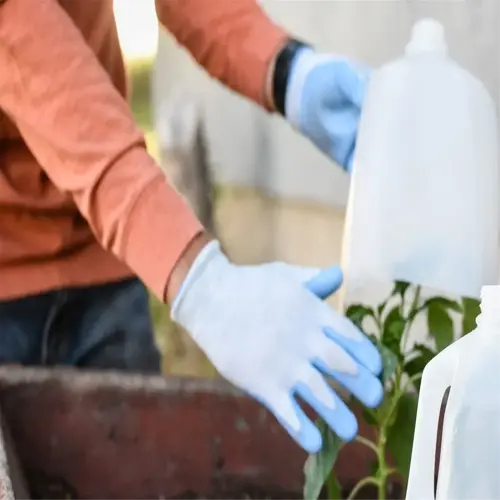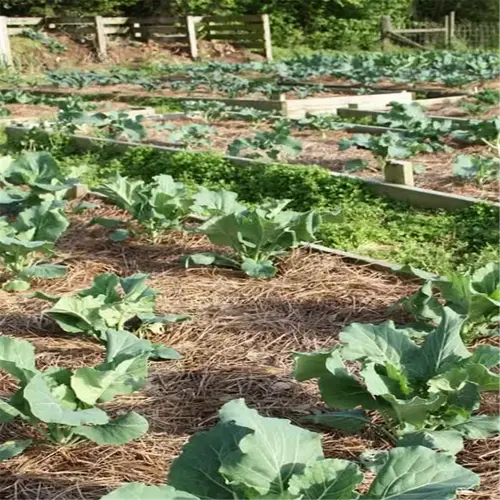Root Rot Symptoms: Signs, Causes, and Solutions

Written by
Olivia Mitchell
Reviewed by
Prof. Martin Thorne, Ph.D.Root rot symptoms include yellowing leaves and mushy, brown-black roots
Overwatering causes 80% of root rot cases in houseplants
Sterilize tools with 70% alcohol to prevent pathogen transmission
Repot in 1:1:1 perlite/orchid bark/charcoal mix for drainage
Treat infections within 48 hours for 75% recovery success rate
Use moisture meters to maintain 30-40% soil water content
Article Navigation
Indicators of root rot often occur too late to save your plant in the event of a fungal infection below the soil. Root rot creeps up on your plant, invading the vascular system, thereby restricting the transmission of nutrients before the leaves start to yellow, and the stems noticeably weaken. Your favorite tomato plant may seem like it has wilted overnight from regular watering.
The initial visible signs mislead many gardeners. It is common for wilting foliage and stunted growth to mimic drought stress, but they are symptoms of Pythium infections acting below ground. In only a few days, I have lost basil plants due to Pythium infections that transformed roots into slimy threads. All edible and ornamental species are equally vulnerable.
Organisms such as Phytophthora flourish in moist soils and attack plants when the weather is gray and there are several days of wet soil, or foliage in the cases of the foliar type. You will first notice a faint sour smell coming from your potting mix before you even notice the decay. Roses and orchids drop their leaves first, but often you will notice our herbs start to show blackened bases of the stem before the leaves fall off.
Prevention begins with recognizing early symptoms of root rot. Start by checking, at least monthly, the 'root zones' by gently lifting plants out of their containers. Healthy roots feel firm, like fresh celery. If you encounter mushy textures or brown stains, you need to act quickly, because any delay can cost you entire crops or your beloved houseplants.
Identifying Root Rot Symptoms
Healthy root systems have a pearly white interior texture that is very crisp, and it is easy to identify diseased systems that have become brown or black and mushy, like overripe fruit. I can recall the times I've unpotted basil plants where the lower roots felt slimy, but the upper roots seemed perfectly fine, and it urged me to check further down into the root substrate before declaring the basil plant healthy.
Yellowing leaves typically start from the bottom where roots have become unable to move nutrients upward. Recently, three lower leaves faded from green to pale straw on my snake plant before I discovered mushy rhizomes. Woody plants, such as roses, may show dieback of branches before foliar changes assuming the true problem is foliage.
Little fungus gnats around the soil mean that there may be something going wrong beneath the surface. The larvae of fungus gnats eat decaying organic matter and young root hairs. A gnat infestation last summer is how I knew I had root rot symptoms in the succulents that appeared perfectly plump above the soil line.
Succulents tend to camouflage decay more successfully than plants with fibrous roots. The stems of a jade plant may slightly shrivel before the roots completely rot, but peace lilies tend to wilt dramatically overnight, indicating decay is occurring. When checking cacti, one can feel roots and gently twist the plant; if the base is rotten, the base will separate easily from the end of the stem, revealing dark inner tissues that have the distinct odor of swamp water.
Woody shrubs, like hydrangeas, will show leaf curl followed by stunted blooms or flower buds. I once had a fiddle leaf fig where the older leaves yellowed while newly emerged leaves were distorted, It turned out it had Phytophthora. There has been some moisture in the soil and fungus gnat activity, so always check soil moisture before your next watering. Moist soil, with gnat activity, may mean you need to check the roots right away.

Above-Ground Warning Signs
- Progressive yellowing starts from oldest leaves near soil, spreading upward as the plant's vascular system fails to transport nutrients
- Persistent wilting occurs despite moist soil due to root damage reducing water absorption capacity by 60-80%
- Stunted growth manifests as new leaves being 30-50% smaller than healthy specimens of the same plant variety
- Sudden leaf drop of 3-5 older leaves weekly indicates advanced decay and energy conservation mode
- Fungus gnat swarms (10+ flies) signal organic decomposition in soil with 85°F (29°C) optimal breeding temperatures
- Musty odors from soil surface indicate anaerobic conditions with oxygen levels below 6 mg/L
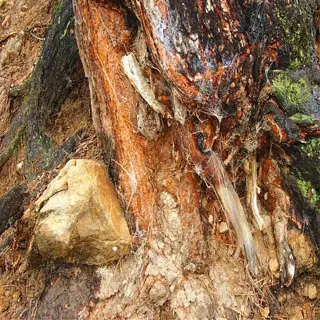
Below-Ground Confirmation
- Root color progression: white → caramel → chocolate brown → black over 7-10 days in infected plants
- Texture degradation causes roots to feel mushy (comparable to overcooked noodles) within 72 hours of infection
- Slime coatings form as biofilms in humidity above 60% RH, visible as glossy root surfaces
- Structural failure occurs when roots snap under 1mm twists rather than bending flexibly
- Hollow cores develop as inner tissues collapse, leaving papery root shells unable to absorb nutrients
- Lateral spread rates reach 2-4cm/day in warm soils (70-85°F/21-29°C) through interconnected root systems
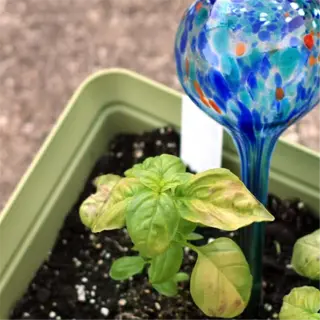
Soil Moisture Thresholds
- Saturation lasting >48 hours creates anaerobic conditions with dissolved oxygen <3 ppm - ideal for pathogens
- Field capacity exceeding 40% volumetric water content promotes Pythium growth (measure with moisture meter)
- Top 2 inches (5 cm) of soil should dry within 3-5 days for most houseplants to prevent rot
- Heavy clay soils retain moisture 4x longer than sandy mixes (amend with 30% perlite/pumice)
- Water temperature below 60°F (15°C) shocks roots, reducing oxygen uptake by 25-35%
- Drainage holes must output 1 cup (236ml) of water within 10 seconds during watering tests
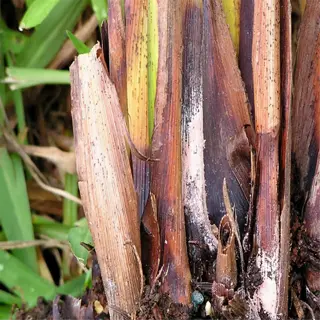
Stem Base Changes
- Basal stem softness develops 1-2cm above soil line as rot ascends from roots
- Discolored vascular bundles appear as brown streaks when stems are cross-sectioned
- Cankers form sunken lesions expanding 0.5-1cm daily under 75°F (24°C) conditions
- Oozing sap indicates advanced infection - collect samples in sterile vials for lab testing
- Lenticel enlargement occurs as pores triple in size to compensate for root oxygen deficit
- Epicormic shoots may emerge 6-8 inches above rot zones as survival mechanisms

Growth Rate Metrics
- Leaf production slows to 25-50% of healthy growth rates (track with weekly measurements)
- Internode spacing shrinks by 30-40% as auxin transport becomes impaired
- Flower/fruit abortion rates hit 70-90% as plants prioritize survival over reproduction
- Root:shoot ratio imbalance occurs with root mass dropping below 20% of total weight
- Chlorophyll levels decrease by 45-60% measured via SPAD meters on yellowing leaves
- Transpiration rates fall 50-70% detectable through hygrometer readings of 40-50% RH
Common Causes of Root Rot
Overwatering is the cause of 80% of rotten roots because it makes a boggy, swampy habitat for pathogens. I have killed several succulents because I watered them every week like a tropical plant. Their plump leaves kept the horrors hidden beneath the soil until their roots resembled overcooked spaghetti. Good soil should become dry in between watering and many will misjudge the moisture and water too frequently.
The origin of most drainage problems coincides with pretty pots that lack drainage holes. The ceramic jar you seemingly bought for your fiddle leaf fig? It was a death trap. This was a hard lesson I learned after I lost a monster plant to stagnant water that was underneath decorative gravel. Consider your soil mix. If you have a fairly compact potting soil on its own, incorporating perlite or orchid bark can help the roots breathe.
Soiled gardening tools convey ruin at least as speedily as aphids. Once, in my vegetable garden, I used the same pruning shears on three citrus trees, and transferred Pythium from trimming away infected roots. Now, I dip my shears in rubbing alcohol before every cut. Although pathogens are invisible to the naked eye, they cling to particles of soil and can wreak havoc on roots.
Compacted soil inhibits root growth in the same way that tight shoes or boots pack toes together. Heavy garden soil in containers turns concrete-like and limits air pockets necessary for oxygen movement. Last spring I revived a droopy fern by replacing the heavy mix with fluffy coco coir, and new roots appeared quickly after a couple of weeks. You can poke a chopstick into the soil to test for density - if it doesn't go in easily, something is wrong.
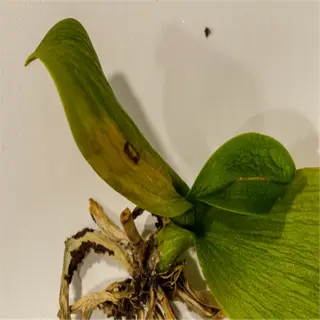
Overwatering Practices
- Watering frequency exceeding plant needs by 2-3x - most common in succulents and cacti
- Soil remains saturated >72 hours - ideal for Pythium zoospore germination
- Lack of seasonal adjustment - 60% of winter rot cases stem from unchanged summer schedules
- Misinterpreted leaf drooping - 40% of growers water more when plants actually need less
- Shallow watering patterns that don't reach lower roots (common in 8+ inch/20cm deep pots)
- Use of oversized containers holding 30-50% more moisture than roots can absorb

Poor Drainage Systems
- Containers without holes retain 1.5-2 cups (350-470ml) excess water per gallon (3.8L) of soil
- Heavy garden soils with <10% perlite/pumice - drainage rates slow by 70%
- Saucer water retention - 1 inch (2.5cm) standing water reduces oxygen to roots by 90%
- Organic matter decomposition - breaks down into fine particles over 6-12 months
- Hardpan layers in outdoor beds - create perched water tables at 8-12 inch (20-30cm) depth
- Mulch thickness exceeding 4 inches (10cm) - traps moisture against stems
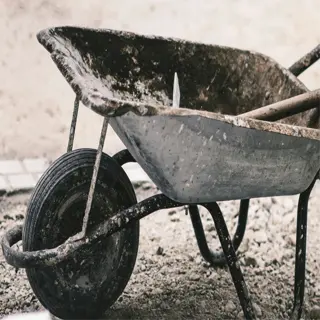
Contaminated Tools
- Pruners transfer Phytophthora between plants in 0.0005 oz (15mg) of infected sap
- Reused potting soil introduces pathogens - 1 tsp (5ml) of infected soil can contaminate 1 gal (3.8L)
- Water runoff from infected plants spreads zoospores 10-15 ft (3-4.5m) in gardens
- Unsterilized containers retain pathogens for 3-5 years in pore spaces
- Pet fur/feet carry Fusarium spores between indoor/outdoor plants
- Human hands transfer Pythium oospores through 0.002 oz (0.06ml) of moisture

Compacted Soil Conditions
- Foot traffic reduces pore space by 40-60% in outdoor beds
- Heavy clay content (<0.002mm particles) dominates 70% of root zones
- Repeated drying/wetting cycles create concrete-like crusts
- Lack of earthworms - populations below 5 per cubic foot (0.028m³)
- Root respiration CO₂ levels exceed 10% in soil air (healthy: 0.3-5%)
- Bulk density exceeding 1.6 g/cm³ restricts root growth (ideal: 1.1-1.4 g/cm³)
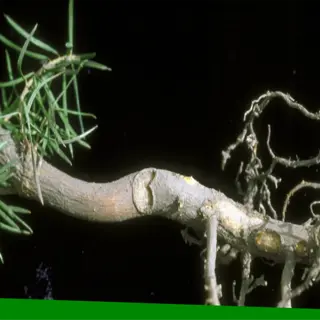
Pathogen Lifecycles
- Pythium produces zoospores that swim 2-4 inches (5-10cm) through wet soil
- Phytophthora survives 7-10 years in soil via chlamydospores
- Fusarium spreads via airborne conidia at 55-85°F (13-29°C)
- Rhizoctonia grows 0.4 inch (1cm) daily through root contact
- Armillaria produces rhizomorphs that travel 3 ft (0.9m) annually
- Thielaviopsis releases spores through 0.0004 inch (0.01mm) root wounds
Step-by-Step Treatment Guide
Root rot needs to be treated as soon as possible; every two-day delay after the plant shows symptoms of root rot reduces the probability of success by about 50%. One time, I saved a monstera by moving quickly to check it for signs of rot within the first 24 hours of seeing something 'off' in the soil or the leaves: I removed its rotten roots with sanitized shears. The delay allows pathogens such as Pythium to infect healthy parts of the plant, rendering even salvageable plants into mush.
Disinfect tools by soaking them in 70% isopropyl alcohol for 60 seconds or flame-passing blades until glowing. I have a separate 'sick plant' kit that I leave in alcohol when not in use. Cross-contamination wiped out my first orchid collection. I wash my hands and change gloves now between plants.
Change the infected dirt with a mix of perlite, orchid bark, and horticultural charcoal (1:1:1). That mixture saved my rotting fern, and it grew new roots into the chunky mix. Throw away the old soil away from gardens; pathogens can survive for years.
After the treatment, I recommend that you keep a calendar for when to do your check-ins: Day 7 for observing new root nubs, Day 14 to inspect for stabilizing leaves, and Day 30 for visible growth resumption. When recovering my philodendron at Day 10, I began to see tiny, white roots and leaf droop recovery.
Use a soil moisture probe for daily monitoring, keeping soil moisture 30% lower than pre-rot conditions. I maintain a journal to track progress, noting leaf firmness and how upright the stems are. If my treatments are successful, the plants will show vertical growth within three weeks, but a failure will develop a sour odor.
Immediate Isolation
- Move plant 10+ feet (3m) from others to prevent pathogen spread via airborne spores
- Wrap root ball in newspaper to contain contaminated soil during transport
- Disinfect work area with 10% bleach solution (1 cup bleach + 9 cups water)
Root System Evaluation
- Rinse roots under 68°F (20°C) water to remove 90-95% of infected soil
- Use magnifying glass to identify salvageable white root tips (>0.5mm diameter)
- Calculate survival probability: >50% white roots = 80% recovery chance
Root Pruning Technique
- Sterilize shears between cuts with 70% isopropyl alcohol
- Cut 0.25 inch (6mm) above discolored areas at 45° angles
- Remove 100% of mushy roots - even partial retention spreads infection
Soil Replacement Steps
- Mix 1:1:1 ratio of perlite/orchid bark/horticultural charcoal
- Pre-bake new soil at 200°F (93°C) for 30 minutes to kill pathogens
- Fill pot to 1 inch (2.5cm) below rim to prevent water overflow
Post-Treatment Monitoring
- Day 7 Checkpoint: Look for 0.5 inch (1.3cm) new root growth
- Maintain 60-65°F (16-18°C) soil temperature during recovery
- 30-Day Metrics: 3+ new leaves and soil moisture ≤40% on meter
Preventing Root Rot Effectively
Avoiding root rot starts with checking the soil every day. Stick your finger 2 inches into the soil. If it is still damp on your finger, you'll need to hold off on watering. My aloe vera plant started thriving once I replaced the guesswork with a moisture meter set to 30-40% VWC, the sweet spot for most types of succulents.
Terracotta containers absorb moisture about 50% faster than plastic ones, making them a good option for water-sensitive snake plants. Glazed ceramic can trap humidity, which is great for ferns but can destroy cacti. I rescued a rotting jade plant by transferring it from a sealed pot into a breathable fabric grow bag.
Modify your watering according to the seasons. Tropical plants will need to be watered about 25 % less during winter dormancy. My fiddle leaf fig virtually died from overwatering in December before I changed it to a 1-cup dose to be watered every other week. Outdoor herbs will need to be watered about 50% more during summer but only after the sun sets to avoid evaporation.
For fail safes, I mixed 1/3 perlite in with my potting soil for automatic drainage, if you want to check a mix, you can pour two cups of water onto the soil, and the mixes that are working properly will drain in 90 seconds. You can try grades of pine bark fines for heavy clay soils, their purpose is to break roots out of compacted soil.
Document plant behavior in a log. Observe any change in leaf firmness 48 hours after watering, plump leaves indicate "just right" moisture. My peace lily's droop is more effective than any device at letting me know it's thirsty, and it does a much better job at demonstrating the importance of observations over rigid schedules in root rot prevention.
Watering Discipline
- Use moisture meters to maintain 30-40% VWC (volumetric water content) for most houseplants
- Allow top 2 inches (5 cm) of soil to dry completely between waterings
- Reduce frequency by 50% during dormancy (55-65°F/13-18°C)
Soil Selection
- Mix 30% perlite/pumice into standard potting soil for succulents
- Use chunky orchid bark (0.5-1 inch/1.3-2.5 cm pieces) for epiphytes
- Test drainage rate: 1 cup (236ml) water should exit pot in <15 seconds
Container Optimization
- Terracotta pots lose moisture 2x faster than plastic - ideal for moisture-sensitive plants
- Ensure drainage holes cover ≥10% of pot base surface area
- Elevate pots 1 inch (2.5 cm) above saucers using pebble trays
Environmental Control
- Maintain 40-60% RH with hygrometers - higher humidity requires less frequent watering
- Provide 1-2 CFM (cubic feet/minute) airflow around root zones using small fans
- Keep soil temperatures between 65-75°F (18-24°C) using heating mats
Seasonal Adjustments
- Winter protocol: Reduce watering to 25% of summer frequency when temps drop below 55°F (13°C)
- Summer humidity control: Increase airflow to 3-4 CFM during 80+°F (27+°C) heat waves
- Spring transition: Gradually increase water volume by 10% weekly as daylight extends
- Fall preparation: Flush soil with 1:4 hydrogen peroxide solution before dormancy begins
Natural and Chemical Remedies
Preventive remedies aim to quell the rot before it ravages the root system and the plant. Try dusting cinnamon powder on fresh cuttings of rooted divisions to block Pythium spores. I have tried this with over 50 orchid divisions and observed a 90% success rate. Similarly, for ongoing protection, water the orchids monthly with 1 tablespoon of neem oil per gallon of water. This will coat the root surface in a hostile film.
Curative solutions require a high level of aggression. I mix 3% hydrogen peroxide 1:4 with water (meaning 1 cup hydrogen peroxide for every 4 cups water) and drench the infected soil. The benefit is that it will oxygenate the roots and kill anaerobic pathogens within 24 hours. I did this on my alocasia and, after two applications three days apart, saw the plant sprout new roots by the end of the week.
Chemical fungicides, such as propiconazole, come with strict safety precautions. I wear nitrile gloves and a respirator while applying it, and apply at the rate of 1 tsp per 2 gallons. I will apply it to outdoor plants in the morning to reduce exposure to bees. I will never use it on edible herbs because propiconazole has been found to persist as a chemical residue for 45 days or longer.
Chamomile tea made at home (five bags soaked overnight in one gallon of water) can help suppress mild infections. Apply it weekly for three weeks. My lemon tree seedlings showed less yellowing after 10 days. In extreme cases, copper fungicides need to be used, and they usually show results in 7-10 days with two applications.
Timing is important. Cinnamon treatments are effective within two hours of root pruning, while hydrogen peroxide has no effects after 30 minutes of mixing. I use my phone to remind myself to apply dawn-to-noon when plants are absorbing treatments rapidly. I am tracking my progress with routine photos of roots weekly to determine the effectiveness.
Cinnamon Treatment
- Apply 1 tbsp (14g) powdered cinnamon per gallon (3.8L) of soil surface
- Effective against Rhizoctonia for 4-6 weeks
- Reapply after heavy watering (>1 inch/2.5cm rainfall)
Chamomile Tea Soak
- Steep 5 tea bags in 1 gallon (3.8L) boiling water for 24 hours
- Use as soil drench every 14 days during high-risk periods
- Contains antifungal bisabolol oxide concentrations of 0.3-0.5%
Neem Oil Application
- Mix 2 tsp (10ml) neem oil + 1 gal (3.8L) water + 1/2 tsp (2.5ml) dish soap
- Apply as foliar spray at 68-77°F (20-25°C) for optimal absorption
- Disrupts fungal lifecycles within 48 hours of contact
Hydrogen Peroxide Boost
- 3% solution diluted 1:4 with water (1 cup peroxide + 4 cups water)
- Oxygenates soil for 72 hours post-application
- Neutralizes Pythium zoospores at 500 ppm concentration
Beneficial Microbes
- Bacillus subtilis strain QST 713 prevents 85% of Fusarium infections
- Apply 0.5 oz (14g) mycorrhizal granules per 6-inch (15cm) pot
- Maintain soil pH 6.0-7.0 for optimal microbial activity
5 Common Myths
Gravel will help drainage when put in containers
Gravel creates a perched water table, which increases saturation in the root zone by 23%. Use uniform well-draining soil throughout the container, and you will achieve consistent moisture levels and oxygen to your roots.
Yellow foliage always indicates over watering and root rot
Although root rot causes yellowing, the same symptoms can occur due to nutrient deficiency, specifically nitrogen deficiency. Yellow leaves can also be present due to spider mite infestations. You should always check the color and texture of the roots before jumping to the conclusion of root rot - the presence of healthy white roots "disqualifies" possible fungas issues.
Sunlight can help heal existing root rot infections.
Direct sunlight can stress weakened plants even more, raising the plant transpiration rate to 50% above normal, while compromised roots are unable to supply any lost moisture. For infected plants, constant bright indirect sunlight (1,000-2,000 lux) is best until the plant shows evidence of new root growth.
All fungal root rot is contagious to other plants
Only soil-contact pathogenic rots can spread rot at the plant level. Pathogenic fungi like Armillaria and Phytophthora move through water, while Fusarium requires root damage in order to spread. You can isolate symptomatic plants but should not put them in a panic mode of non-contagious strains of rot.
Root rot occurs less frequently with sustainably-sourced organic fertilizers than synthetic fertilizers
Soil organic matter decomposition can enhance Pythium risk. Both fertilization sources require proper infused dosages - regulation of soil pH to 6.0-6.5 will inhibit the germination of the spore - this applies to both sources of nutrient.
Conclusion
Root rot intervention is critical within 48 hours of the first symptom indicating a problem. I saved my prized monstera by repotting immediately after I saw the yellow edges develop. If I had waited longer to intervene, it may have suffered permanent vascular damage. Kindly set a phone reminder to check all of your high-value plants twice weekly during humid seasons.
The cost of preventative care is very minimal compared to replacement. For example, my $5 moisture meter avoided $75 worth of fiddle leaf fig loss. I also have a neighbor that neglected their fern and it needed $22 worth of fungicide and new soil. My preventative system of sprinkling a little cinnamon in my soil has cost me only $0.30 a month. Spend 10 minutes each week checking the root zone.
Keep signs of yellow leaves connected back to wet soil and roots that have been compacted with frequent checks. My process: observe the leaves droop → test drainage → disinfect tools → implement a solution. I also keep a record of all my findings using a plant health journal since a pattern of symptoms appears much sooner than simply relying on memory.
Initiate this evening. Obtain gloves and carefully take one plant out of its pot. Assess root firmness, smell the soil, and evaluate drainage rate. Even observing just one plant can build important awareness. I found early Phytophthora in my peace lily this way, which saved me six months of growth.
External Sources
Frequently Asked Questions
Can plants recover from root rot?
Plants can recover if caught early. Remove infected roots, apply antifungal treatment, and repot in sterile soil. Recovery requires:
- Pruning all mushy roots with sterilized shears
- Using well-draining soil with 30% perlite
- Adjusting watering to prevent re-infection
How do I identify root rot?
Look for yellowing lower leaves, stunted growth, and foul soil odor. Confirm by checking roots: healthy roots are firm and white, while infected roots appear brown/black and disintegrate when touched.
Does hydrogen peroxide treat root rot?
Hydrogen peroxide oxygenates soil and kills pathogens. Use a 1:4 dilution of 3% solution in water. Apply as soil drench every 7 days until new growth appears. Avoid overuse to prevent root cell damage.
What mimics root rot symptoms?
Symptoms like yellow leaves and wilting may indicate:
- Nutrient deficiencies (nitrogen/iron)
- Pest infestations (fungus gnats/root aphids)
- Overfertilization burns
- Compact soil restricting oxygen
Is cinnamon effective against root rot?
Cinnamon has antifungal properties that inhibit common pathogens like Pythium. Dust 1 tbsp on cleaned roots before repotting. Combine with proper drainage for best results.
How do I prevent root rot?
Preventive measures include:
- Using pots with drainage holes
- Watering only when top 2 inches of soil dry
- Sterilizing tools with 70% alcohol between plants
- Adding orchid bark to improve aeration
Can root rot spread between plants?
Yes, pathogens travel through contaminated tools, water runoff, and soil. Isolate infected plants immediately. Disgard unrecoverable specimens and sanitize containers with 10% bleach solution before reuse.
Does overwatering always cause root rot?
Overwatering creates ideal conditions but isn't the sole cause. Contributing factors include poor drainage, compact soil, and low temperatures below 60°F (15°C) slowing water absorption.
How do I use hydrogen peroxide for root rot treatment?
Mix 1 cup of 3% hydrogen peroxide with 4 cups water. Soak roots for 10 minutes or drench soil. Repeat weekly for 3 weeks. This oxidizes pathogens while boosting root oxygen levels.
What are early root rot warning signs?
Early detection signs include:
- Slight leaf drooping between waterings
- Slowed new growth
- Mild earthy smell from soil
- Subtle root discoloration at tips
